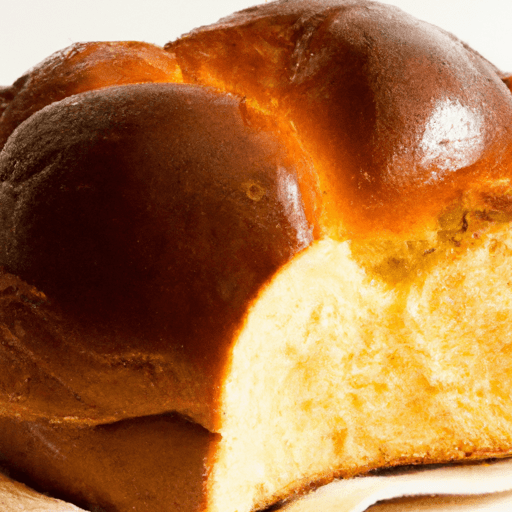The Beauty of Brioche: A Heavenly Delight
There’s a special kind of bread that oozes elegance and melts in your mouth with each delectable bite. It’s none other than brioche - a true masterpiece in the world of baking. This rich and buttery French bread has captivated the hearts and taste buds of food enthusiasts for centuries. In this article, we’ll delve into the captivating aspects of brioche, from its delightful taste to its versatile uses and intriguing history.
Taste and Texture: A Slice of Bliss
Brioche is a culinary delight known for its remarkable taste and heavenly texture. The richness of this bread stems from the high proportion of eggs and butter used in its creation. The combination of these two key ingredients results in a soft, tender crumb that is light and airy, while still maintaining a slightly moist and buttery interior. The taste is subtly sweet, making it the perfect canvas for creating both sweet and savory dishes.
Versatile Uses: From Morning till Night
One of the reasons brioche stands out among other breads is its versatility in the kitchen. From breakfast to dinner, this bread can effortlessly elevate any dish. In the morning, lightly toasted brioche slices slathered with butter and fruit preserves become a delightful treat to accompany a steaming cup of coffee. The golden crust and pillowy goodness make it an ideal choice for French toast, with every bite offering a symphony of flavors.
Moving on to lunch or dinner, brioche buns are the perfect vessel for creating delicious sandwiches or burgers. The buttery richness of the bread complements a variety of fillings, from crispy fried chicken to juicy beef patties. Its soft yet sturdy texture ensures a satisfying bite, keeping every layer intact until the very last mouthful.
And let’s not forget dessert! Brioche dough transforms into luscious bread puddings, flaky pastries, or indulgent French toast casseroles. Its ability to absorb flavors while maintaining its softness makes it an exceptional choice for creating sweet treats that are bound to impress.
Nutritional Value: A Balanced Perspective
While brioche is undeniably a decadent bread, its nutritional value deserves attention. The high amount of eggs and butter contributes to its caloric content, providing energy and essential fats. Brioche also contains carbohydrates and protein, making it a great source of sustenance. As with any food, moderation is key. Enjoying brioche as part of a balanced diet can bring joy and satisfaction while appreciating its unique qualities.
A Glimpse into History: Brioche’s Origins
The origins of brioche can be traced back to France, where it gained popularity in the 17th century. Legend has it that brioche was created by a Parisian pastry chef who enriched his bread dough with eggs and butter, originally known as “broyé” or “pound cake.” Over time, the recipe evolved, and the name “brioche” emerged.
Brioche quickly became a staple in French cuisine, favored by royalty and enjoyed by all social classes. Its association with luxury and indulgence made it a symbol of culinary excellence. Today, brioche continues to hold its esteemed reputation as a beloved bread, appreciated by people around the world.
In Conclusion: A Bread Fit for Royalty
Brioche captures the essence of culinary craftsmanship in every bite. Its delightful taste, versatile uses, and intriguing history make it a bread that deserves recognition. Whether enjoyed in the simplicity of toasted slices or as part of elaborate pastries, brioche holds the power to elevate any culinary creation. So why not treat yourself to a slice of this enchanting bread and experience a little taste of heaven?
Interesting Facts about Brioche:
Origin: Brioche is a type of French bread that originated in France during the 17th century. The exact origin of brioche is uncertain, but it is believed to have been developed in the region of Normandy or Vendée.
Common Uses: Brioche is a versatile bread that is commonly used in both sweet and savory dishes. It is often enjoyed as a breakfast or snack, served plain or with butter and jam. Brioche is also used in making French toast, burgers, sandwiches, and various pastries, such as the famous French bakery item, “pain aux raisins.”
Nutritional Benefits: Brioche is a rich and decadent bread made with generous amounts of butter and eggs. While it is delicious, it is also high in calories and fat. It can be a good source of energy, but it is not considered a particularly nutritious bread when compared to whole grain options.
Unique Properties: Brioche has a light and fluffy texture due to its high butter and egg content. It has a rich, slightly sweet flavor and a delicate crumb. The dough is often enriched with ingredients like milk, sugar, and a touch of orange blossom water, which contribute to its unique taste and aroma.
Historical Significance: Brioche has a significant place in French culinary history. During the reign of Louis XIV, brioche was a symbol of luxury and indulgence. The phrase “Qu’ils mangent de la brioche” (Let them eat brioche) is often attributed to Marie Antoinette, although historical evidence suggests that she never actually said it. The phrase became a symbol of the inequality between the nobility and the lower classes in pre-revolution France.




Use the share button below if you liked it.
It makes me smile, when I see it.